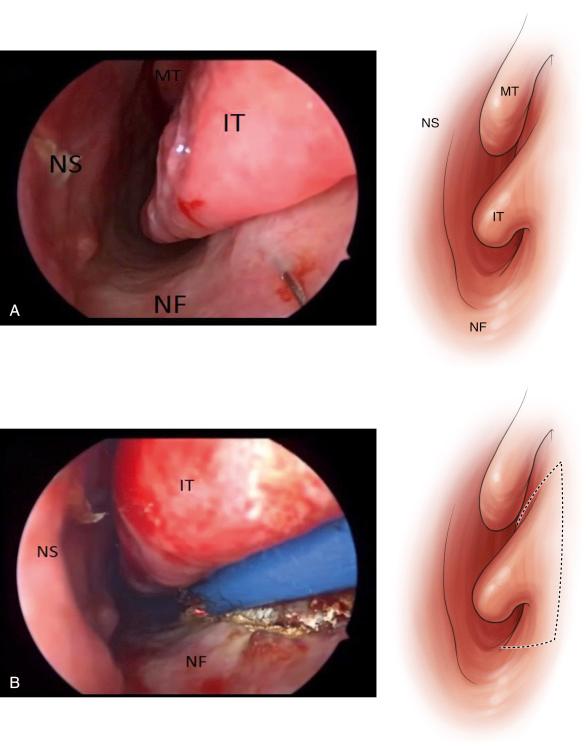Physical Address
304 North Cardinal St.
Dorchester Center, MA 02124
Despite recent advances in endoscopic techniques, tumors involving the anterior maxilla remain difficult to reach through a purely endonasal approach.
Even with cross-court procedures, lesions involving the anteroinferior and anterolateral corners of the maxillary sinus may be inaccessible endoscopically.
Sublabial incisions with canine fossa puncture or a Caldwell-Luc approach are often still necessary for surgical removal of anteriorly based maxillary pathology.
The endoscopic Denker approach is a technique that involves creation of an endonasal anterior maxillotomy without the need for a separate sublabial incision.
With this technique, complete exposure of the anterior maxilla is attained as well as the entire lateral and posterior walls of the maxillary sinus, enabling direct access to both the pterygopalatine and infratemporal fossae.
The anteromedial maxillectomy was first described by Alfred Denker in 1906. It involved removal of the ethmoids, lateral nasal wall, and middle and inferior turbinates through a gingivobuccal sulcus incision that was extended medially to the frenulum.
In 1908, Sturmann and Canfield introduced an endonasal procedure to expose the anterior maxilla.
An intranasal incision was made posterior to the vestibule.
Subperiosteal elevation was then performed laterally over the pyriform aperture into the canine fossa to access the anterior wall of the maxillary sinus.
The endoscopic Denker approach is somewhat of an amalgamation of these two techniques, with the added feature of being performed completely under endoscopic visualization. It has also been referred to as a total endoscopic anterior medial maxillectomy (TEAMM).
A mucosal incision is initially made along the pyriform aperture followed by elevation of the soft tissues overlying the anterior maxilla in the subperiosteal plane.
An endoscopic endonasal anterior maxillotomy is then created, taking care to preserve the anterosuperior alveolar and infraorbital nerves.
The size and position of the maxillotomy may then be adjusted according to the location and extent of the lesion.
Under visualization with a 4-mm 0-degree rod-lens endoscope (Karl Storz Endoscopy, Tuttlingen, Germany), 1% lidocaine HCL with 1:100,000 epinephrine is first injected into the anticipated incision sites along the nasal floor, lateral nasal wall, and anterior to the head of the inferior turbinate ( Fig. 22.1A ).

A unipolar electrocautery with a guarded needle tip (Megadyne, Draper, Utah) is used to incise the mucosa inferiorly at the junction of the nasal floor and lateral nasal wall, carrying the incision through the periosteum ( Fig. 22.1B ).
A second mucosal incision is then made superiorly along the lateral nasal wall and carried anteroinferiorly to lie just in front of the anterior head of the inferior turbinate overlying the edge of the pyriform aperture (see Fig. 22.1B ).
Become a Clinical Tree membership for Full access and enjoy Unlimited articles
If you are a member. Log in here